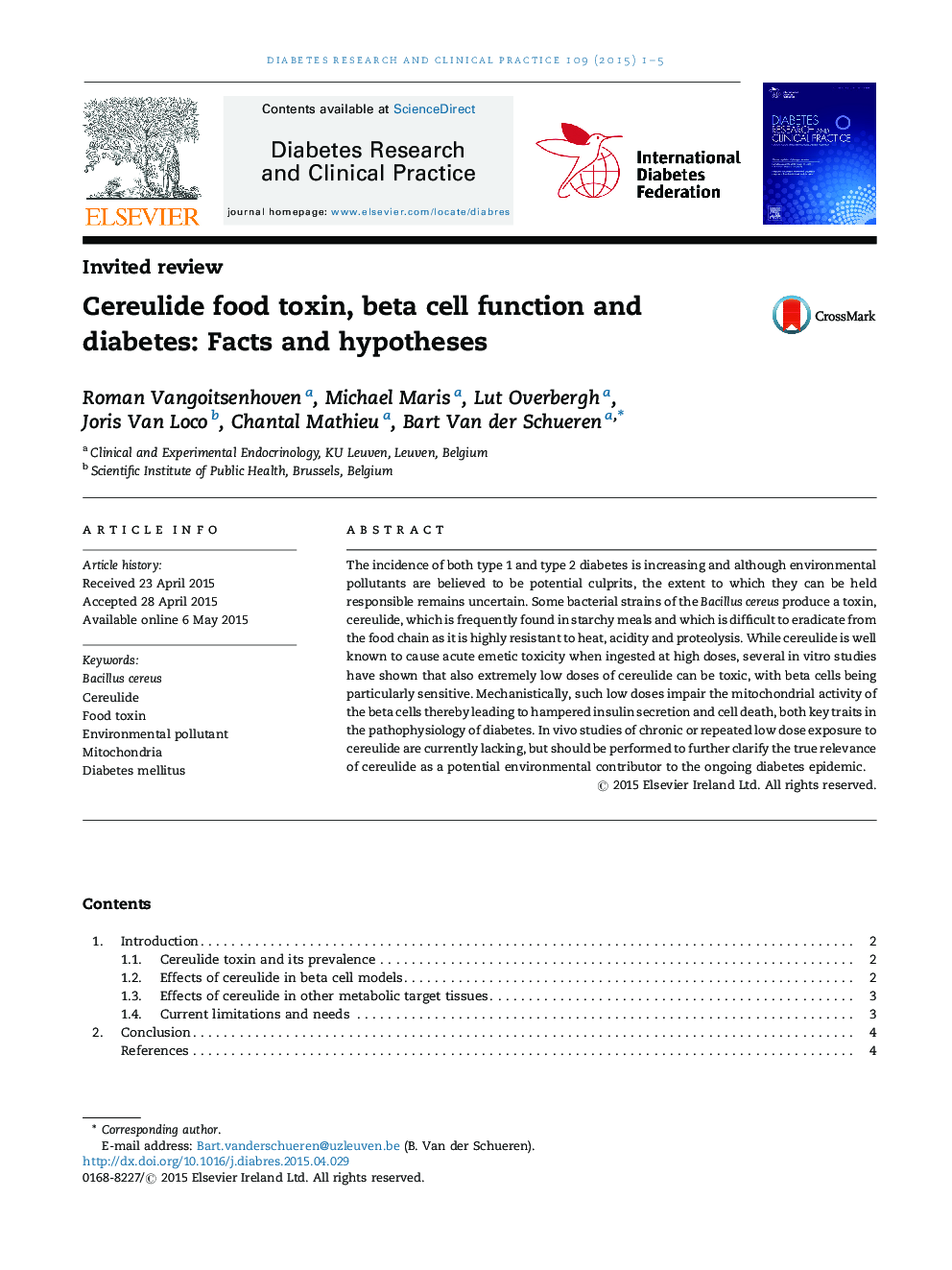| Article ID | Journal | Published Year | Pages | File Type |
|---|---|---|---|---|
| 5899107 | Diabetes Research and Clinical Practice | 2015 | 5 Pages |
Abstract
The incidence of both type 1 and type 2 diabetes is increasing and although environmental pollutants are believed to be potential culprits, the extent to which they can be held responsible remains uncertain. Some bacterial strains of the Bacillus cereus produce a toxin, cereulide, which is frequently found in starchy meals and which is difficult to eradicate from the food chain as it is highly resistant to heat, acidity and proteolysis. While cereulide is well known to cause acute emetic toxicity when ingested at high doses, several in vitro studies have shown that also extremely low doses of cereulide can be toxic, with beta cells being particularly sensitive. Mechanistically, such low doses impair the mitochondrial activity of the beta cells thereby leading to hampered insulin secretion and cell death, both key traits in the pathophysiology of diabetes. In vivo studies of chronic or repeated low dose exposure to cereulide are currently lacking, but should be performed to further clarify the true relevance of cereulide as a potential environmental contributor to the ongoing diabetes epidemic.
Related Topics
Life Sciences
Biochemistry, Genetics and Molecular Biology
Endocrinology
Authors
Roman Vangoitsenhoven, Michael Maris, Lut Overbergh, Joris Van Loco, Chantal Mathieu, Bart Van der Schueren,
